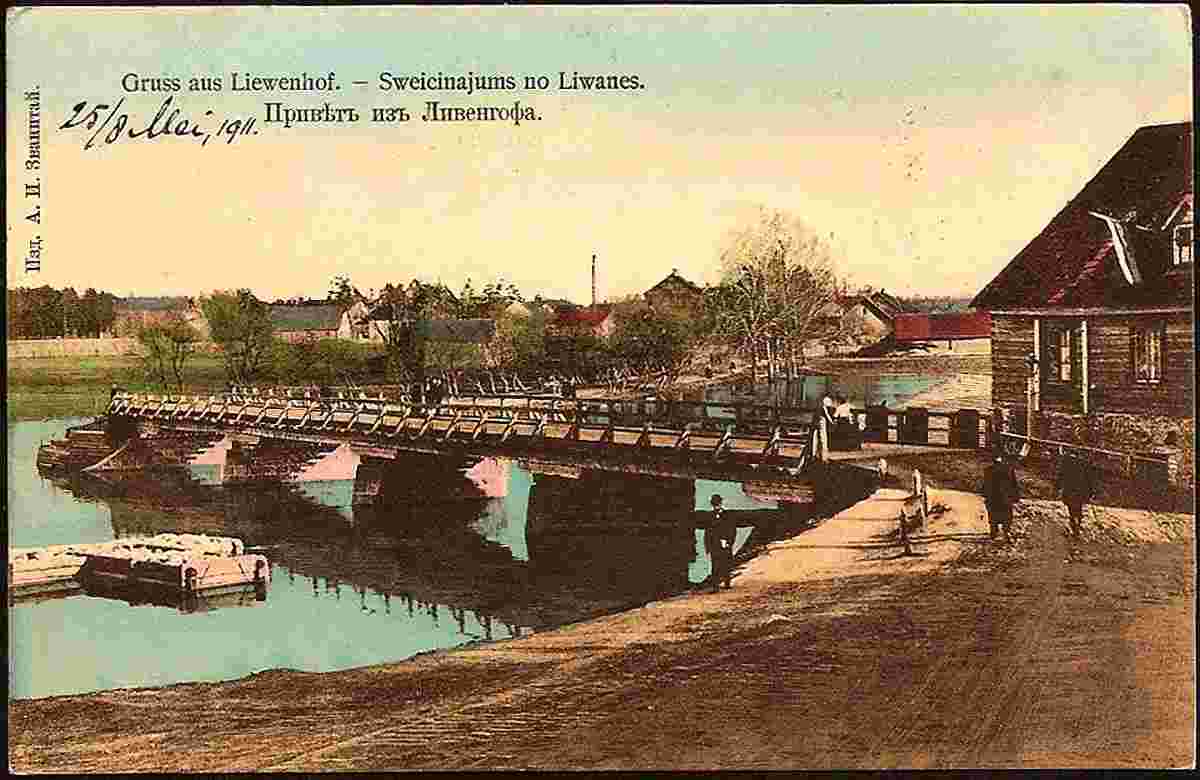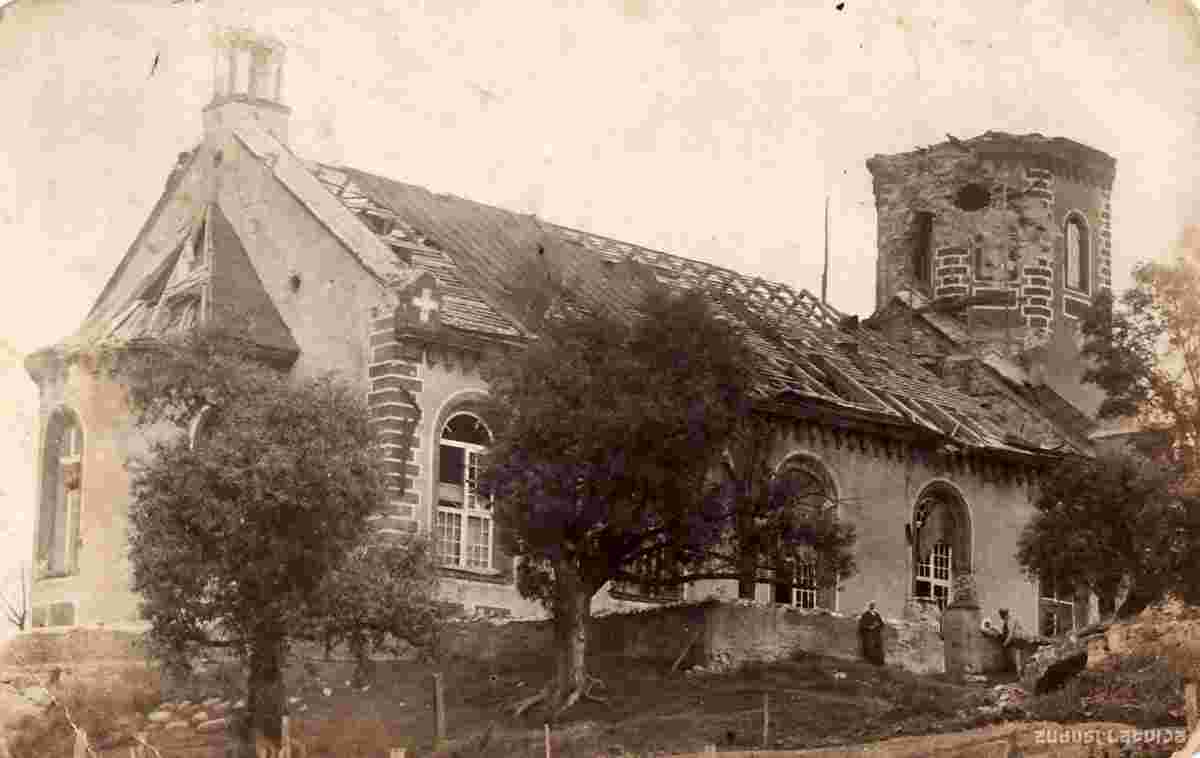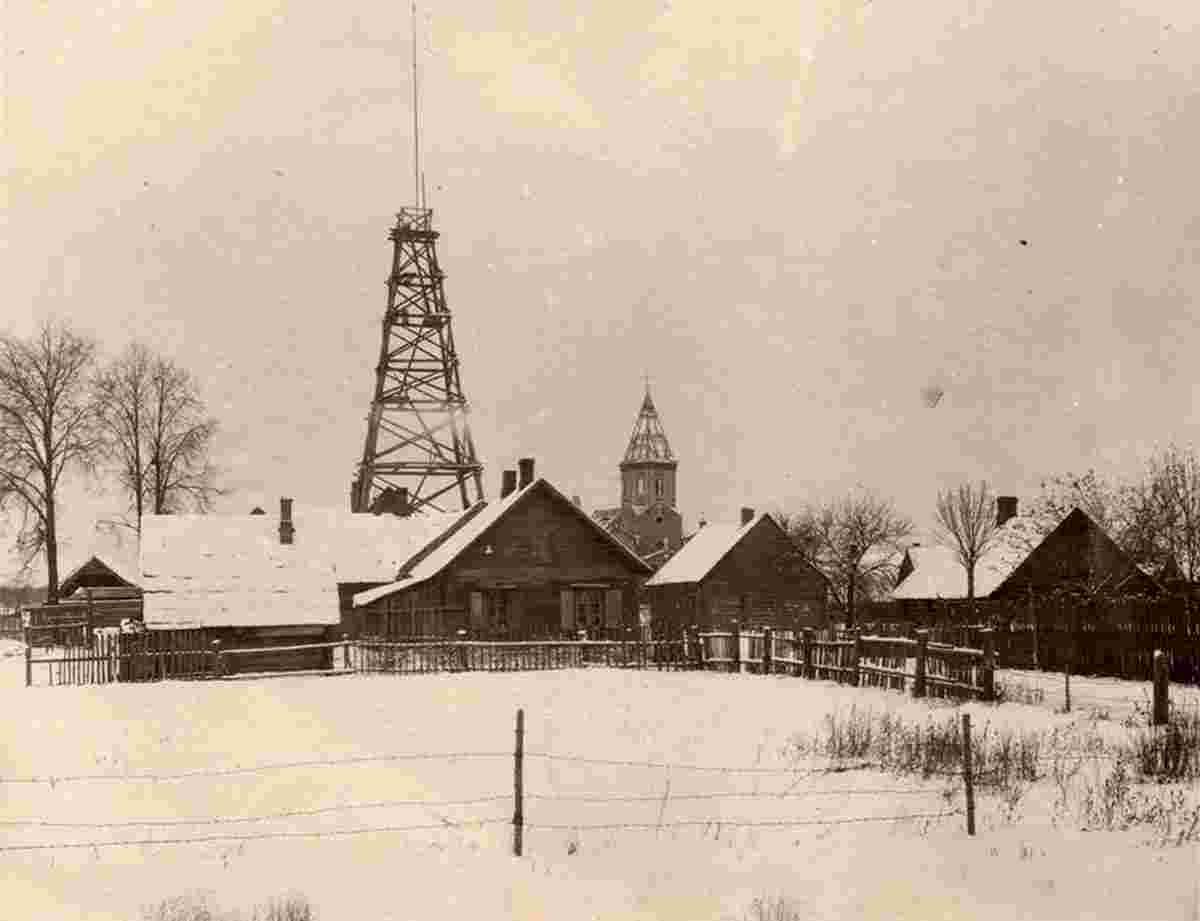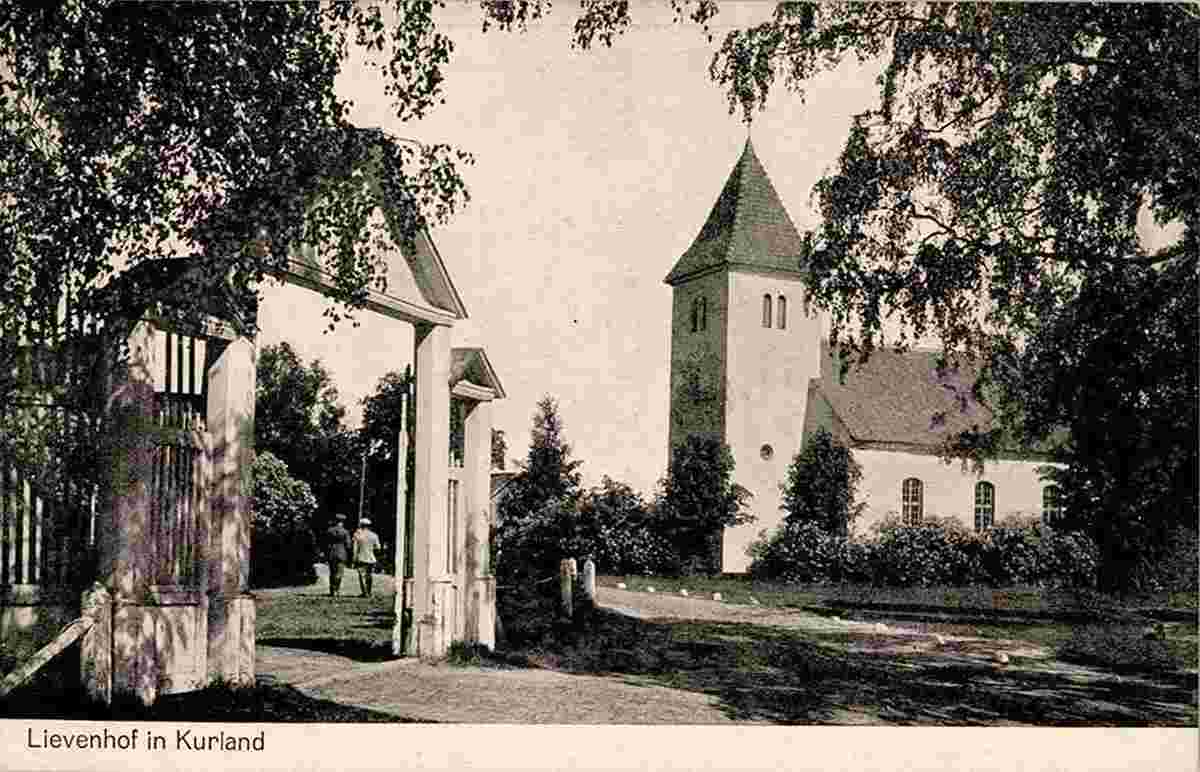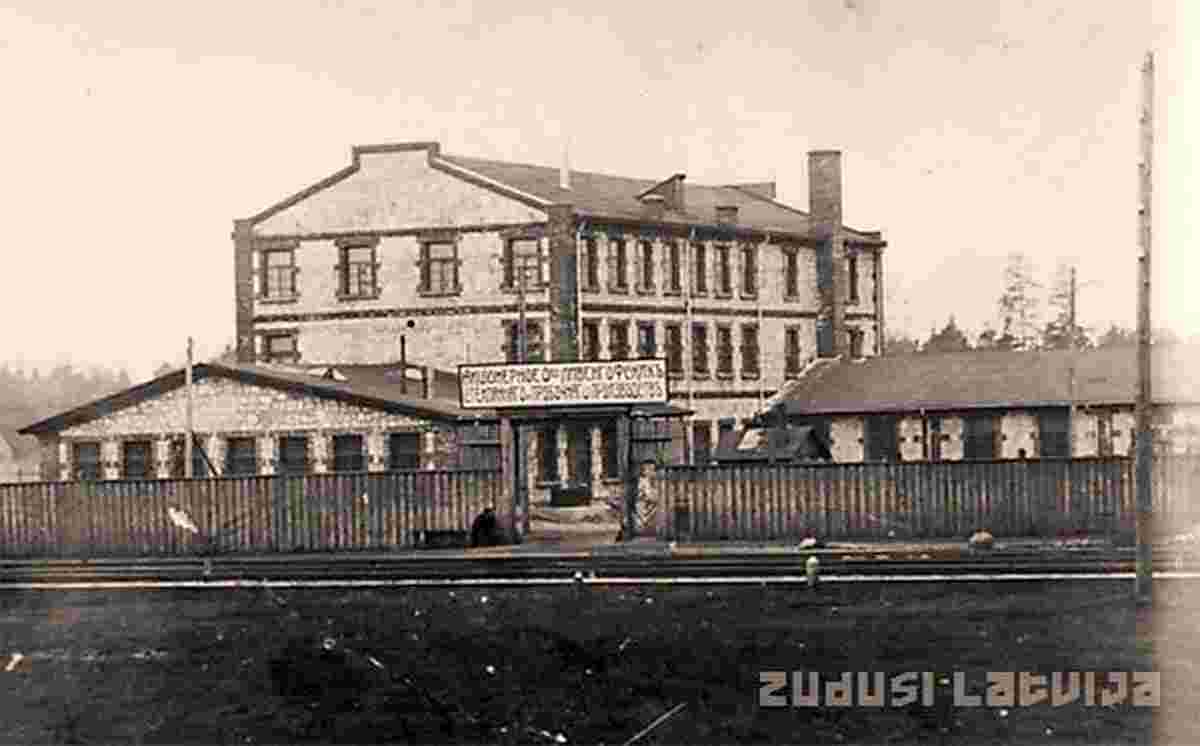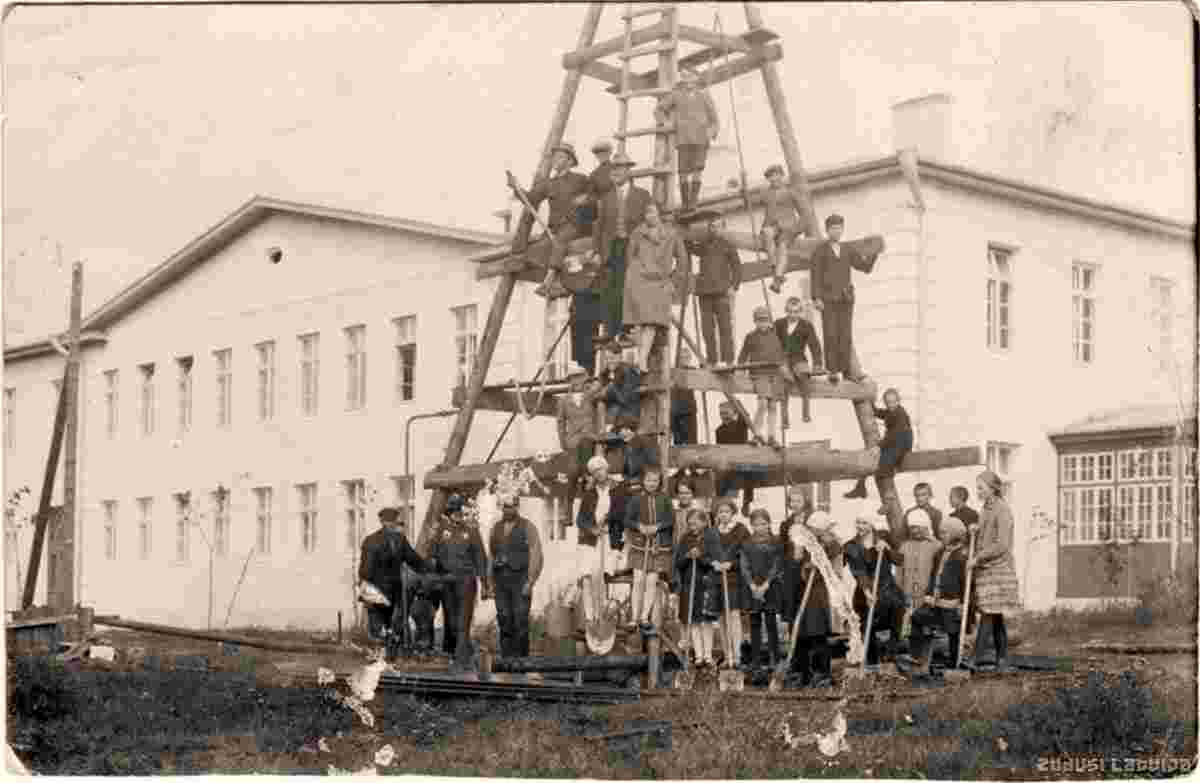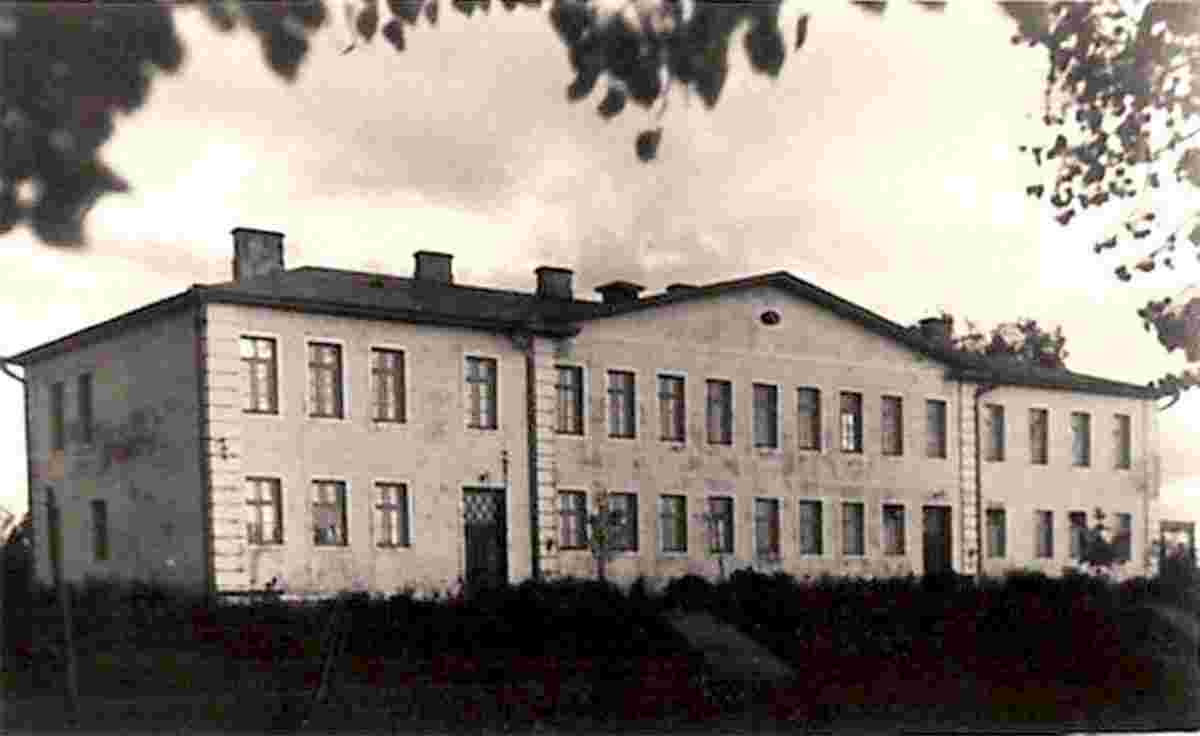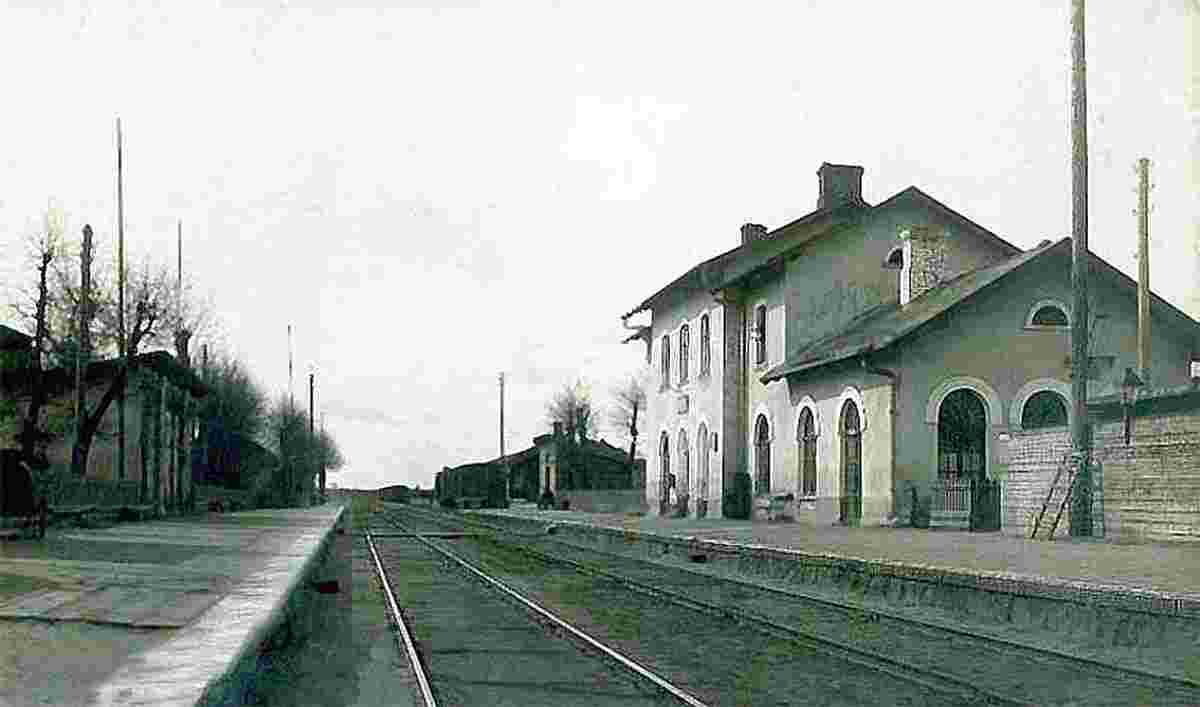Historical and old photos of Livani (german - Lievenhof)
HistoryOrigins of Līvāni as a bigger place of population are linked to the 1533, when the then owner of the land Lieven established the manor and called it after his own name Lievenhof. The 1678, the first Catholic Church was built here. The city suffered considerably during the two world wars. Name of Līvāni is associated with the glass. In 1887 a glass factory was founded here, which today has ceased operation. It was as early as in the 11th century, when settlement of traders and craftsmen was established at the current location of Līvāni. The settlement belonged to the old Latgallian city-state of Jersika - it was just 7 kilometres north of the centre of Jersika state, at the place where the then significant waterways of Dubna and Daugava meet. The first documentary evidence of a fortified settlement called Dubna dates back to a later period, 1289. The beginnings of Līvāni as we know it today are related to 1533, when the local German landlord Lieven founded here a hamlet and named it after himself - Lievenhof. In 1677, Līvāni were transferred into the ownership of the Polish magnate Leonard Pociej. Being a Catholic Christian, in 1678 he built the first Catholic church. The church stood on the riverbank of Dubna, close to the current location of Līvāni high school No.1 In those days, many beggars used to gather around the church. They used to take the food that was given to them to the riverbank of Dubna, beyond the road, there they had their meal. For that reason, the place got named "Beggar Bay" (Ubaglīcis). Nowadays it is an attractive residential area. In 1824, Līvāni was granted the legal status of a borough ("miests"). It was this place where the second folk-school in Latgale was established in the year 1854. Another important event was opening of the first local pharmacy in 1689. When Latvia became an independent state, the development of Līvāni was fostered by the newly acquired legal status of a town (1926). Some 370 dwelling houses (most of them - wooden buildings) were built in a compact set along the main street of Līvāni, Rīgas iela. This street was famous for a wide range of small shops most of them owned by the local Jews. In the mid 1930s, there were around 180 shops in Līvāni. The town also played the role of the regional centre of culture. Origin: en.wikipedia.org | ||||||||||||
 |
Historical and old photos of Livani (german - Lievenhof)
Līvānu vēsturiskās un senās fotogrāfijas (vāciski - Lievenhof) |
| Main page • Countries of Europa • Cities of Latvia |
| Robinson Rd, CB 13862 Nassau, NP, The Bahamas |
